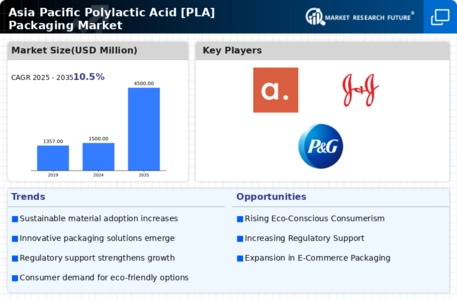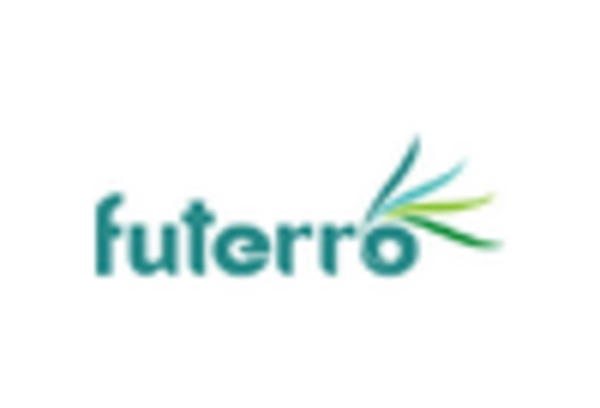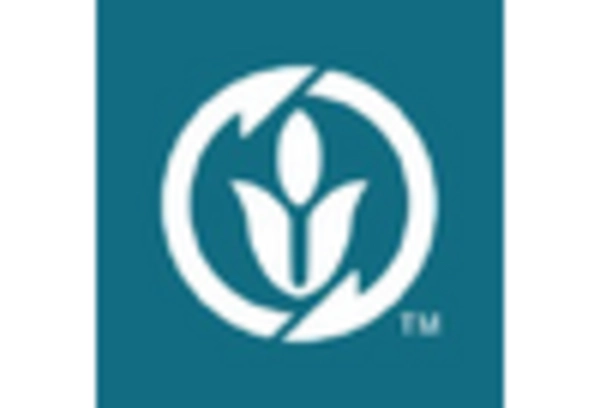-
EXECUTIVE SUMMARY
-
MARKET INTRODUCTION
-
Definition
-
Scope of the Study
- Research Objective
- Limitations
-
Assumptions
-
RESEARCH METHODOLOGY
-
Overview
-
Data Mining
-
Secondary Research
-
Primary Research
- Breakdown of Primary
-
Primary Interviews and Information Gathering Process
-
Respondents
-
Forecasting Modality
-
Market Size Estimation
- Bottom-Up Approach
- Top-Down Approach
-
Data Triangulation
-
Validation
-
MARKET DYNAMICS
-
Overview
-
Drivers
-
Restraints
-
Opportunities
-
MARKET FACTOR ANALYSIS
-
Value Chain Analysis
-
Porter’s Five Forces Analysis
- Bargaining
- Bargaining Power of Buyers
- Threat of
- Threat of Substitutes
- Intensity of Rivalry
-
Power of Suppliers
-
New Entrants
-
COVID-19 Impact Analysis
- Market Impact Analysis
- Opportunity and Threat Analysis
-
Regional Impact
-
ASIA PACIFIC
-
POLYLACTIC ACID [PLA] PACKAGING MARKET, BY TYPE
-
Overview
-
Racemic
-
PLLA (Poly-l-lactic acid)
-
PDLA (Poly-d-lactic acid)
-
Regular
-
PLLA (Poly-l-lactic acid)
-
PDLLA (Poly-dl-lactic acid)
-
PLA Blends
-
ASIA PACIFIC POLYLACTIC ACID [PLA] PACKAGING MARKET, BY RAW MATERIAL
-
Overview
-
Sugarcane
-
Corn
-
Cassava
-
Sugar Beet
-
Others
-
ASIA PACIFIC POLYLACTIC ACID [PLA] PACKAGING MARKET, BY FORM
-
Overview
-
Films and Sheets
-
Coatings
-
Fibre
-
Others
-
ASIA PACIFIC POLYLACTIC ACID [PLA] PACKAGING MARKET, BY APPLICATION
-
Overview
-
Packaging
-
Transport
-
Agriculture
-
Medical
-
Electronics
-
Textile
-
Hygiene
-
Others
-
ASIA PACIFIC POLYLACTIC ACID [PLA] PACKAGING MARKET, BY END USER
-
Overview
-
Plastic Films
-
Bottles
-
Biodegradable
-
Medical Devices
-
ASIA PACIFIC POLYLACTIC ACID [PLA] PACKAGING MARKET, BY
-
REGION
-
Overview
-
Asia-Pacific
-
- China
-
- Japan
-
- India
-
- Australia
-
- South Korea
-
- Indonesia
-
- Thailand
-
- Vietnam
-
- Malaysia
-
- Singapore
-
- Rest of Asia-Pacific
-
COMPETITIVE LANDSCAPE
-
Overview
-
Competitive Analysis
-
Market Share Analysis
-
Major Growth Strategy in the Asia Pacific Polylactic
-
Acid [PLA] Packaging Market,
-
Competitive Benchmarking
-
Leading
-
Players in Terms of Number of Developments in the Asia Pacific Polylactic Acid [PLA]
-
Packaging Market,
-
Key developments and Growth Strategies
- Merger & Acquisitions
- Joint Ventures
-
New Product Launch/Service Deployment
-
Major Players Financial Matrix
- Major Players R&D Expenditure.
-
Sales & Operating Income, 2022
-
COMPANY PROFILES
-
BASF SE
- Company Overview
- Financial Overview
- Products Offered
- Key Developments
- SWOT Analysis
- Key Strategies
-
FUTERRO
- Financial Overview
- Products Offered
- Key Developments
- SWOT Analysis
- Key Strategies
-
Company Overview
-
NATUREWORKS LLC
- Company Overview
- Financial Overview
- Products Offered
- Key Developments
- SWOT Analysis
- Key Strategies
-
TOTALENERGIES CORBION
- Company Overview
- Financial Overview
- Products Offered
- Key Developments
- SWOT Analysis
- Key Strategies
-
SULZER LTD
- Financial Overview
- Products Offered
- Key Developments
- SWOT Analysis
- Key Strategies
-
Company Overview
-
MITSUBISHI CHEMICAL CORPORATION
- Company Overview
- Products Offered
- Key Developments
- SWOT Analysis
- Key Strategies
-
Financial Overview
-
TORAY INDUSTRIES,
- Company Overview
- Financial Overview
- Key Developments
- SWOT Analysis
-
INC..
-
Products Offered
-
Key Strategies
-
MERCK KGAA
- Company Overview
- Products Offered
- Key Developments
- SWOT Analysis
- Key Strategies
-
Financial Overview
-
TIGERNIX PTE. LTD.
- Company Overview
- Financial Overview
- Products
- Key Developments
- SWOT Analysis
- Key
-
Offered
-
Strategies
-
EVONIK INDUSTRIES AG
- Company Overview
- Products Offered
- Key Developments
- SWOT Analysis
- Key Strategies
-
Financial Overview
-
UNITIKA LTD
- Company Overview
- Financial Overview
- Products
- Key Developments
- SWOT Analysis
-
Offered
-
Key Strategies
-
UNITIKA LTD
- Company Overview
- Products Offered
- Key Developments
- SWOT Analysis
- Key Strategies
-
Financial Overview
-
Jiangxi Academy
- Company Overview
- Financial Overview
- Products Offered
- Key Developments
- SWOT Analysis
- Key Strategies
-
of Sciences Biological New Materials Co., Ltd
-
Shanghai Tong-jie-liang
- Company Overview
- Financial Overview
- Products Offered
- Key Developments
- SWOT Analysis
- Key Strategies
-
Biomaterials Co., Ltd
-
Zhejiang Hisun Biomaterials Co., Ltd
- Financial Overview
- Products Offered
- Key Developments
- SWOT Analysis
- Key Strategies
-
Company Overview
-
Radici Partecipazioni SpA
- Company Overview
- Products Offered
- Key Developments
- SWOT Analysis
- Key Strategies
-
Financial Overview
-
APPENDIX
-
References
-
Related Reports
-
-
LIST OF TABLES
-
TABLE
-
ASIA PACIFIC POLYLACTIC ACID [PLA] PACKAGING MARKET, SYNOPSIS, 2018-2032
-
TABLE
-
ASIA PACIFIC POLYLACTIC ACID [PLA] PACKAGING MARKET, ESTIMATES & FORECAST,
-
ASIA PACIFIC POLYLACTIC ACID [PLA] PACKAGING
-
MARKET, BY TYPE, 2018-2032 (USD BILLION)
-
ASIA PACIFIC POLYLACTIC ACID
-
[PLA] PACKAGING MARKET, BY RAW MATERIAL, 2018-2032 (USD BILLION)
-
ASIA
-
PACIFIC POLYLACTIC ACID [PLA] PACKAGING MARKET, BY FORM, 2018-2032 (USD BILLION)
-
ASIA PACIFIC POLYLACTIC ACID [PLA] PACKAGING MARKET, BY APPLICATION, 2018-2032
-
(USD BILLION)
-
ASIA PACIFIC POLYLACTIC ACID [PLA] PACKAGING MARKET,
-
BY END USER, 2018-2032 (USD BILLION)
-
CHINA POLYLACTIC ACID [PLA] PACKAGING
-
MARKET, BY TYPE, 2018-2032 (USD BILLION)
-
CHINA POLYLACTIC ACID [PLA]
-
PACKAGING MARKET, BY RAW MATERIAL, 2018-2032 (USD BILLION)
-
CHINA POLYLACTIC
-
ACID [PLA] PACKAGING MARKET, BY FORM, 2018-2032 (USD BILLION)
-
CHINA
-
POLYLACTIC ACID [PLA] PACKAGING MARKET, BY APPLICATION, 2018-2032 (USD BILLION)
-
CHINA POLYLACTIC ACID [PLA] PACKAGING MARKET, BY END USER, 2018-2032
-
(USD BILLION)
-
JAPAN POLYLACTIC ACID [PLA] PACKAGING MARKET, BY TYPE,
-
JAPAN POLYLACTIC ACID [PLA] PACKAGING MARKET,
-
BY RAW MATERIAL, 2018-2032 (USD BILLION)
-
JAPAN POLYLACTIC ACID [PLA]
-
PACKAGING MARKET, BY FORM, 2018-2032 (USD BILLION)
-
JAPAN POLYLACTIC
-
ACID [PLA] PACKAGING MARKET, BY APPLICATION, 2018-2032 (USD BILLION)
-
TABLE
-
JAPAN POLYLACTIC ACID [PLA] PACKAGING MARKET, BY END USER, 2018-2032 (USD BILLION)
-
INDIA POLYLACTIC ACID [PLA] PACKAGING MARKET, BY TYPE, 2018-2032 (USD
-
BILLION)
-
INDIA POLYLACTIC ACID [PLA] PACKAGING MARKET, BY RAW MATERIAL,
-
INDIA POLYLACTIC ACID [PLA] PACKAGING MARKET,
-
BY FORM, 2018-2032 (USD BILLION)
-
INDIA POLYLACTIC ACID [PLA] PACKAGING
-
MARKET, BY APPLICATION, 2018-2032 (USD BILLION)
-
INDIA POLYLACTIC ACID
-
[PLA] PACKAGING MARKET, BY END USER, 2018-2032 (USD BILLION)
-
AUSTRALIA
-
POLYLACTIC ACID [PLA] PACKAGING MARKET, BY TYPE, 2018-2032 (USD BILLION)
-
TABLE
-
AUSTRALIA POLYLACTIC ACID [PLA] PACKAGING MARKET, BY RAW MATERIAL, 2018-2032
-
(USD BILLION)
-
AUSTRALIA POLYLACTIC ACID [PLA] PACKAGING MARKET, BY
-
FORM, 2018-2032 (USD BILLION)
-
AUSTRALIA POLYLACTIC ACID [PLA] PACKAGING
-
MARKET, BY APPLICATION, 2018-2032 (USD BILLION)
-
AUSTRALIA POLYLACTIC
-
ACID [PLA] PACKAGING MARKET, BY END USER, 2018-2032 (USD BILLION)
-
TABLE 28
-
SOUTH KOREA POLYLACTIC ACID [PLA] PACKAGING MARKET, BY TYPE, 2018-2032 (USD BILLION)
-
SOUTH KOREA POLYLACTIC ACID [PLA] PACKAGING MARKET, BY RAW MATERIAL,
-
SOUTH KOREA POLYLACTIC ACID [PLA] PACKAGING
-
MARKET, BY FORM, 2018-2032 (USD BILLION)
-
SOUTH KOREA POLYLACTIC ACID
-
[PLA] PACKAGING MARKET, BY APPLICATION, 2018-2032 (USD BILLION)
-
SOUTH
-
KOREA POLYLACTIC ACID [PLA] PACKAGING MARKET, BY END USER, 2018-2032 (USD BILLION)
-
INDONESIA POLYLACTIC ACID [PLA] PACKAGING MARKET, BY TYPE, 2018-2032
-
(USD BILLION)
-
INDONESIA POLYLACTIC ACID [PLA] PACKAGING MARKET, BY
-
RAW MATERIAL, 2018-2032 (USD BILLION)
-
INDONESIA POLYLACTIC ACID [PLA]
-
PACKAGING MARKET, BY FORM, 2018-2032 (USD BILLION)
-
INDONESIA POLYLACTIC
-
ACID [PLA] PACKAGING MARKET, BY APPLICATION, 2018-2032 (USD BILLION)
-
TABLE
-
INDONESIA POLYLACTIC ACID [PLA] PACKAGING MARKET, BY END USER, 2018-2032 (USD
-
BILLION)
-
THAILAND POLYLACTIC ACID [PLA] PACKAGING MARKET, BY TYPE,
-
THAILAND POLYLACTIC ACID [PLA] PACKAGING MARKET,
-
BY RAW MATERIAL, 2018-2032 (USD BILLION)
-
THAILAND POLYLACTIC ACID
-
[PLA] PACKAGING MARKET, BY FORM, 2018-2032 (USD BILLION)
-
THAILAND
-
POLYLACTIC ACID [PLA] PACKAGING MARKET, BY APPLICATION, 2018-2032 (USD BILLION)
-
THAILAND POLYLACTIC ACID [PLA] PACKAGING MARKET, BY END USER, 2018-2032
-
(USD BILLION)
-
VIETNAM POLYLACTIC ACID [PLA] PACKAGING MARKET, BY TYPE,
-
VIETNAM POLYLACTIC ACID [PLA] PACKAGING MARKET,
-
BY RAW MATERIAL, 2018-2032 (USD BILLION)
-
VIETNAM POLYLACTIC ACID [PLA]
-
PACKAGING MARKET, BY FORM, 2018-2032 (USD BILLION)
-
VIETNAM POLYLACTIC
-
ACID [PLA] PACKAGING MARKET, BY APPLICATION, 2018-2032 (USD BILLION)
-
TABLE
-
VIETNAM POLYLACTIC ACID [PLA] PACKAGING MARKET, BY END USER, 2018-2032 (USD BILLION)
-
MALAYSIA POLYLACTIC ACID [PLA] PACKAGING MARKET, BY TYPE, 2018-2032 (USD
-
BILLION)
-
MALAYSIA POLYLACTIC ACID [PLA] PACKAGING MARKET, BY RAW MATERIAL,
-
MALAYSIA POLYLACTIC ACID [PLA] PACKAGING MARKET,
-
BY FORM, 2018-2032 (USD BILLION)
-
MALAYSIA POLYLACTIC ACID [PLA] PACKAGING
-
MARKET, BY APPLICATION, 2018-2032 (USD BILLION)
-
MALAYSIA POLYLACTIC
-
ACID [PLA] PACKAGING MARKET, BY END USER, 2018-2032 (USD BILLION)
-
TABLE 53
-
SINGAPORE POLYLACTIC ACID [PLA] PACKAGING MARKET, BY TYPE, 2018-2032 (USD BILLION)
-
SINGAPORE POLYLACTIC ACID [PLA] PACKAGING MARKET, BY RAW MATERIAL, 2018-2032
-
(USD BILLION)
-
SINGAPORE POLYLACTIC ACID [PLA] PACKAGING MARKET, BY
-
FORM, 2018-2032 (USD BILLION)
-
SINGAPORE POLYLACTIC ACID [PLA] PACKAGING
-
MARKET, BY APPLICATION, 2018-2032 (USD BILLION)
-
SINGAPORE POLYLACTIC
-
ACID [PLA] PACKAGING MARKET, BY END USER, 2018-2032 (USD BILLION)
-
TABLE 58
-
REST OF ASIA PACIFIC POLYLACTIC ACID [PLA] PACKAGING MARKET, BY TYPE, 2018-2032
-
(USD BILLION)
-
REST OF ASIA PACIFIC POLYLACTIC ACID [PLA] PACKAGING
-
MARKET, BY RAW MATERIAL, 2018-2032 (USD BILLION)
-
REST OF ASIA PACIFIC
-
POLYLACTIC ACID [PLA] PACKAGING MARKET, BY FORM, 2018-2032 (USD BILLION)
-
TABLE
-
REST OF ASIA PACIFIC POLYLACTIC ACID [PLA] PACKAGING MARKET, BY APPLICATION,
-
REST OF ASIA PACIFIC POLYLACTIC ACID [PLA]
-
PACKAGING MARKET, BY END USER, 2018-2032 (USD BILLION)
-
LIST OF FIGURES
-
RESEARCH PROCESS
-
MARKET STRUCTURE FOR THE ASIA PACIFIC
-
POLYLACTIC ACID [PLA] PACKAGING MARKET
-
MARKET DYNAMICS FOR THE ASIA
-
PACIFIC POLYLACTIC ACID [PLA] PACKAGING MARKET
-
ASIA PACIFIC POLYLACTIC
-
ACID [PLA] PACKAGING MARKET, SHARE (%), BY TYPE, 2022
-
ASIA PACIFIC
-
POLYLACTIC ACID [PLA] PACKAGING MARKET, SHARE (%), BY RAW MATERIAL, 2022
-
FIGURE
-
ASIA PACIFIC POLYLACTIC ACID [PLA] PACKAGING MARKET, SHARE (%), BY FORM, 2022
-
ASIA PACIFIC POLYLACTIC ACID [PLA] PACKAGING MARKET, SHARE (%), BY
-
APPLICATION, 2022
-
ASIA PACIFIC POLYLACTIC ACID [PLA] PACKAGING MARKET,
-
SHARE (%), BY END USER, 2022
-
ASIA PACIFIC POLYLACTIC ACID [PLA] PACKAGING
-
MARKET, SHARE (%), BY REGION, 2022
-
ASIA PACIFIC POLYLACTIC ACID [PLA]
-
PACKAGING MARKET: COMPANY SHARE ANALYSIS, 2022 (%)
-
BASF SE: FINANCIAL
-
OVERVIEW SNAPSHOT
-
BASF SE: SWOT ANALYSIS
-
FUTERRO:
-
FINANCIAL OVERVIEW SNAPSHOT
-
FUTERRO: SWOT ANALYSIS
-
FIGURE 15
-
NATUREWORKS LLC: FINANCIAL OVERVIEW SNAPSHOT
-
NATUREWORKS LLC: SWOT
-
ANALYSIS
-
TOTALENERGIES CORBION: FINANCIAL OVERVIEW SNAPSHOT
-
FIGURE
-
TOTALENERGIES CORBION: SWOT ANALYSIS
-
SULZER LTD: FINANCIAL OVERVIEW
-
SNAPSHOT
-
SULZER LTD: SWOT ANALYSIS
-
MITSUBISHI CHEMICAL
-
CORPORATION: FINANCIAL OVERVIEW SNAPSHOT
-
MITSUBISHI CHEMICAL CORPORATION:
-
SWOT ANALYSIS
-
TORAY INDUSTRIES, INC..: FINANCIAL OVERVIEW SNAPSHOT
-
TORAY INDUSTRIES, INC..: SWOT ANALYSIS
-
MERCK KGAA:
-
FINANCIAL OVERVIEW SNAPSHOT
-
MERCK KGAA: SWOT ANALYSIS
-
FIGURE
-
TIGERNIX PTE. LTD.: FINANCIAL OVERVIEW SNAPSHOT
-
TIGERNIX PTE.
-
LTD.: SWOT ANALYSIS
-
EVONIK INDUSTRIES AG: FINANCIAL OVERVIEW SNAPSHOT
-
EVONIK INDUSTRIES AG: SWOT ANALYSIS
-
POLYVEL INC: FINANCIAL
-
OVERVIEW SNAPSHOT
-
POLYVEL INC: SWOT ANALYSIS
-
UNITIKA
-
LTD: FINANCIAL OVERVIEW SNAPSHOT
-
UNITIKA LTD: SWOT ANALYSIS
-
FIGURE
-
JIANGXI ACADEMY OF SCIENCES BIOLOGICAL NEW MATERIALS CO., LTD: FINANCIAL OVERVIEW
-
SNAPSHOT
-
JIANGXI ACADEMY OF SCIENCES BIOLOGICAL NEW MATERIALS CO.,
-
LTD: SWOT ANALYSIS
-
SHANGHAI TONG-JIE-LIANG BIOMATERIALS CO., LTD:
-
FINANCIAL OVERVIEW SNAPSHOT
-
SHANGHAI TONG-JIE-LIANG BIOMATERIALS
-
CO., LTD: SWOT ANALYSIS
-
ZHEJIANG HISUN BIOMATERIALS CO., LTD: FINANCIAL
-
OVERVIEW SNAPSHOT
-
ZHEJIANG HISUN BIOMATERIALS CO., LTD: SWOT ANALYSIS
-
RADICI PARTECIPAZIONI SPA: FINANCIAL OVERVIEW SNAPSHOT
-
FIGURE
-
RADICI PARTECIPAZIONI SPA: SWOT ANALYSIS

















Leave a Comment